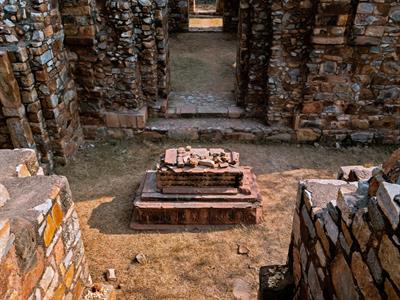
PUMPA - SMART LEARNING
எங்கள் ஆசிரியர்களுடன் 1-ஆன்-1 ஆலோசனை நேரத்தைப் பெறுங்கள். டாப்பர் ஆவதற்கு நாங்கள் பயிற்சி அளிப்போம்
Book Free DemoPeriod of Rasia : (1236 - 1240 )
During the later stages of Iltutmish, he lost his most capable son, Rukn-ud-din-Firuz. So he decided to name his daughter Rasia Sultana as his successor. She was considered a valiant and able ruler who faced critical times because of the Turkish nobility.
Rasia sultan: She was the one and only female Muslim ruler of Medieval India. She had adopted the attire of men by discarding purdah, the apparel meant for women.
 .
.Turkish Noble
Jalal-ud-din Yakut: An Ethiopian slave who was made as a personal attendant by the Sultan (Rasia), accompanied her till her death.
She preferred to work with Non-Turkish nobles, which did not go well with the Noble Turks. Rasia also had tough times dealing with the Mongols who were plundering Punjab during her reign.
Jalal-ud-din Yakut, who accompanied Rasia in her later periods, was hated by the Turkish nobility; hence they conspired to get both of them murdered in 1240 on their way to Delhi.
Reign of Ghiyas-ud-din Balban : (1266 - 1287)
Balban assumed the throne after three weak successors who ruled the dynasty post the period of Rasia. The first of his action was abolishing 'The Forty', which was seen as a threat to him. He was also known as Ulugh Khan.
Sjida and Paibos: Balban introduced these practices to show his supremacy over the noble class, where “Sjida refers to Prostration” and “Paibos refers to Kissing the Sultan’s feet”.
He established a department of spies to find out the conspirators against the empire and also dealt insubordination and defiance with iron-hand.
Nawros festival: Balban introduced this Persian festival to celebrate the commemoration of the Persian new year.
Balban the Ruthless: A Chilling Account
Balban was ruthless in dealing with his enemies. He also did not spare his people who rebelled against him. One such incident involving his governor Tughril Khan, who was assigned with the area of Bengal, raised his voice against him after a period. Balban, without any second thought, captured and beheaded him. He was merciless in dealing with other enemies like Meos of Mewat.
Meos of Mewat: Belongs to a Muslim Rajput community from the northwestern part of India, faced the wrath of Balban during his tenure.
Balban was equally tactical in his way, but obtaining the assurance from Hulagu Khan ( A grandson of Ghengis Khan ) not to cross the Sutlej river during his reign and thus maintained a cordial relationship with Mongols.
Diwani-i-wisarat: Balban established a separate department for dealing with financial matters named Diwani-i-wisarat
Diwani-i-Ars: This was a department established by him to deal with military affairs during his tenure.
Diwani-i-Ars: This was a department established by him to deal with military affairs during his tenure.
Last days of Balban rule :
Balban built many forts to guard his empire against his adversaries; at the same time, he also patronised poets who were part of his court, notably a poet like Amir Khusrau. Balban died in 1287.

Tomb of Iltutmish
After the death of Balban, his son Kaiqubad was found to be unfit, and thus his commander Malik Jalal-ud-din Khalji ruled the empire under the name Kaiqubad. Later one day, he sent one of his men and murdered Kaiqubad, and thus began a new dynasty under his name " The Khalji Dynasty ".